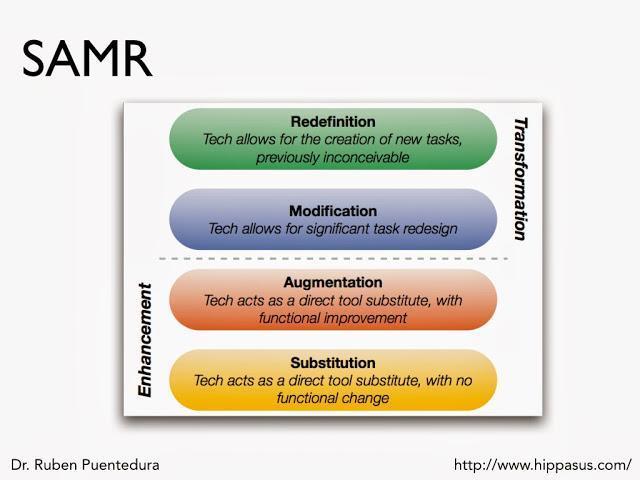Technology Standards
Technology Student Standards
March 12, 2014
Being able to use technology is no longer enough. Today's students need to be able to use technology to analyze, learn and explore. Digital age skills are vital for preparing students to work, live and contribute to the social and civic fabric of their communities.
One set of technology standards adopted by over 100,000 education stakeholders around the world are the International Society for Technology in Education (ISTE) standards. ISTE standards are the definitive standards for learning, teaching and leading in the digital age.
The following are the six main categories for ISTE Standards for students:
· Creativity and Innovation: Students demonstrate creative thinking, construct knowledge, and develop innovative products and processes using technology.
o Apply existing knowledge to generate new ideas, products, or processes
o Create original works as a means of personal or group expression
o Use models and simulations to explore complex systems and issues
o Identify trends and forecast possibilities
· Communication and Collaboration: Students use digital media and environments to communicate and work collaboratively, including at a distance, to support individual learning and contribute to the learning of others.
o Interact, collaborate, and publish with peers, experts, or others employing a variety of digital environments and media
o Communicate information and ideas effectively to multiple audiences using a variety of media and formats
o Develop cultural understanding and global awareness by engaging with learners of other cultures
o Contribute to project teams to produce original works or solve problems
· Research and Information Fluency: Students apply digital tools to gather, evaluate, and use information.
o Plan strategies to guide inquiry
o Locate, organize, analyze, evaluate, synthesize, and ethically use information from a variety of sources and media
o Evaluate and select information sources and digital tools based on the appropriateness to specific tasks
o Process data and report results.
· Critical Thinking, Problem Solving, and Decision Making: Students use critical thinking skills to plan and conduct research, manage projects, solve problems, and make informed decisions using appropriate digital tools and resources. a. Identify and define authentic problems and significant questions for investigation b. Plan and manage activities to develop a solution or complete a project c. Collect and analyze data to identify solutions and/or make informed decisions d. Use multiple processes and diverse perspectives to explore alternative solutions
· Digital Citizenship: Students understand human, cultural, and societal issues related to technology and practice legal and ethical behavior.
o Advocate and practice safe, legal, and responsible use of information and technology
o Exhibit a positive attitude toward using technology that supports collaboration, learning, and productivity
o Demonstrate personal responsibility for lifelong learning
o Exhibit leadership for digital citizenship
· Technology Operations and Concepts: Students demonstrate a sound understanding of technology concepts, systems, and operations.
o Understand and use technology systems
o Select and use applications effectively and productively
o Troubleshoot systems and applications
o Transfer current knowledge to learning of new technologies.
Additional information is located on the Web at http://www.iste.org/standards/standards-for-students.
Examples of Technology Standards
SAMR Model
The SAMR education model is one that focuses on the following four key areas of the way in which technology can be incorporated into student learning:

Some examples of the different levels are as follows:
· Substitution:Tech acts as a direct tool substitute, with no functional change. Using a word processor to take notes, for example, is a useful substitution if you want the notes in a digital format for ease of sharing and uploading, and providing access to them anywhere, any time.
· Augmentation: At theaugmentation level, there again is a direct tool substitute, but there is some improvement in student outcomes. At this level, one of the benefits is teachers can receive almost immediate feedback on student level of understanding of material and students can also learn from others. A backchannel tool, such as TodaysMeet, for whole-class note taking is a good example of this level.
· Modification: Modification allows for a change in the task redesign. Students can be asked to take notes using a screencasting tool and then later go back and add the audio component and post these online for their peers and anyone else who wants to see them. Because they are working for a public audience with this task, each student has a personal stake in their note taking.
· Redefinition:With redefinition, the emphasis is on student-centered learning. The student learns new skills and concepts as they complete the task. Sketchnoting, or visual note taking, is a way for students to practice listening as well as planning an organizational strategy for taking notes. There are drawing and note-taking apps for all platforms available for sketchnoting.
To learn more about the SAMR model, visit http://blog.kathyschrock.net/2013/11/sarm-model-musings.html